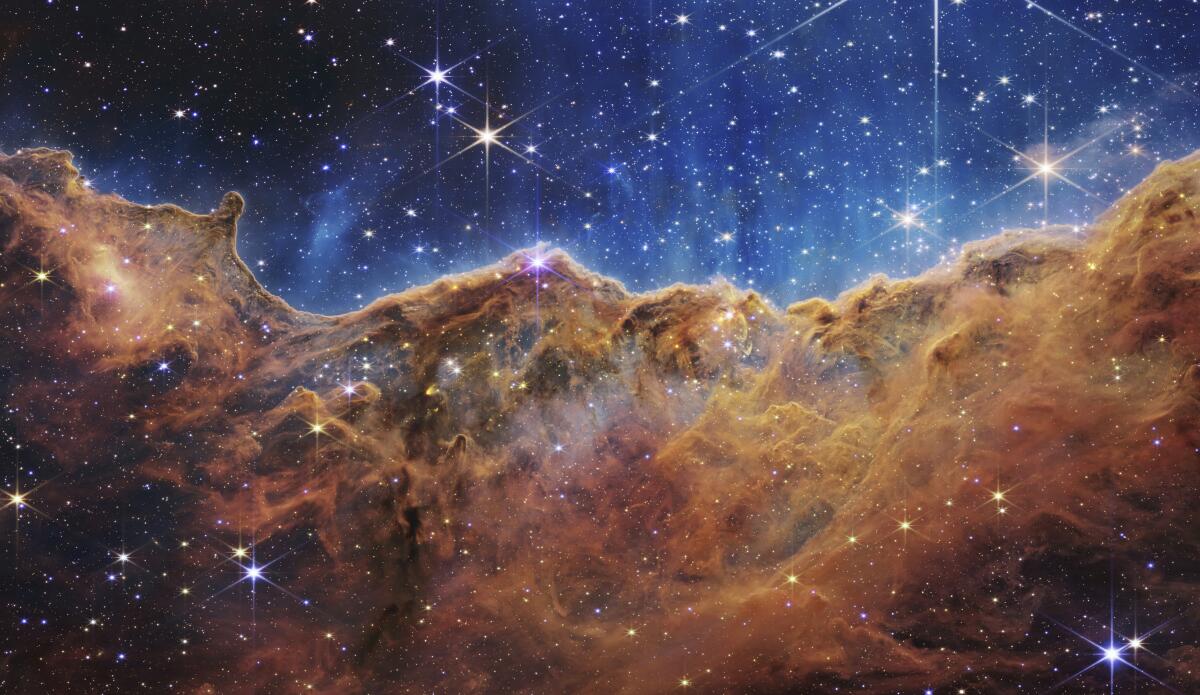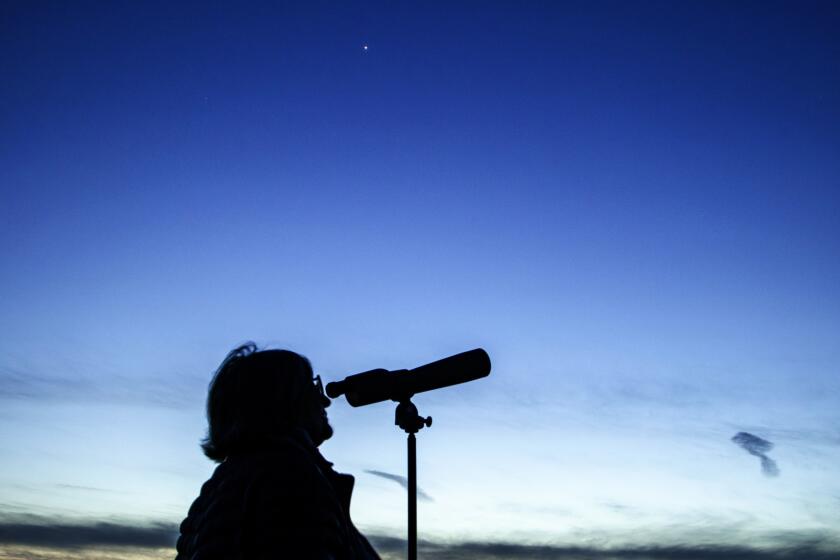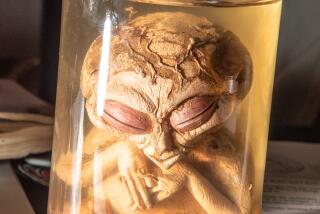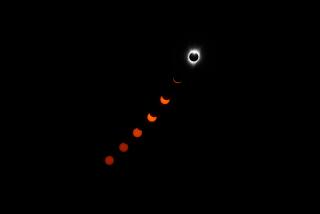Op-Ed: The Webb telescope photos are a welcome antidote to the grim facts of today

- Share via
Facts these days seem so grim. They feel like storm clouds: all too real and ready to bring more lightning than much-needed rain.
A congressional committee is establishing the pattern of facts around the attempted coup on Jan. 6, 2021, and the “Big Lie” that the presidential election was stolen. The death tolls from endless mass shootings. Reports of hunger, war and democracies threatened.
Why wouldn’t we all be scared, spooked and exhausted?
But last week we got a reminder of other kinds of facts, the kind that bring us awe and comfort and context — even joy. The kinds of facts that prompt scientists to break down in tears: facts — made sublime through imagery — of the cosmos itself. Last week we saw the first images from a new space telescope.
Those images and the facts they embody also matter; they are the antidote to the others.
The world gets its first glimpse of ancient light courtesy of NASA’s Webb telescope, the most sophisticated and ambitious deep-space viewing tool yet assembled.
Even a few minutes spent gaping at the mountain range of gas and dust now dubbed the Cosmic Cliff or the crazy-bright heart of a distant galaxy lit by hot gases devoured by a black hole isn’t trivial.
And the longer we look, the better things get.
The James Webb Space Telescope (ah, grim fact: It’s named for a homophobic former NASA administrator) offered us infrared views of ancient galaxies swirling like sea creatures around the whirlpool of a gravitational lens. It focused on a foreground galaxy so massive and perfectly placed in our line of sight that it distorts and magnifies distant light. Look at that “deep field” and you can stare back 13 billion years. It showed us a planetary nebula — around a pair of dying stars in the Southern Ring Nebula — surrounded by its puffed-off dust and gases in such crenulated detail that its brown cloud looks almost like the grain of wood.
It’s all the stuff of wonder. And wonder, like democracy, like the climate, like our safety, is in a pretty precarious place right now.
If we need political and social facts to undergird our approach to a better future — and we do — we also need science to keep gifting us with facts that allow us to experience wonder. Without the wonder that comes from discovery, we become enmeshed in the very machinery that produces what ails us. Wonder reminds us of our better selves and that we live in the neighborhood of things that abide, like star clusters and a nebula. We belong to the infinite universe.
In a few years, 65,000 satellites will be disrupting the darkness in space. Satellite operators must make them less visible or launch fewer of them.
Astronomy largely asks little of us (though some Indigenous communities fighting to keep sacred mountains free of observatories necessarily disagree). Yes, the latest space telescope cost $10 billion (less than an aircraft carrier). But if we spend some of our tax dollars to unlock secrets and vistas, that cost also keeps us rooted in the astonishment of the more-than-human. We learn for the sake of learning — which is, in fact, noble — and we gain more than knowledge published in peer-reviewed journals.
Facts establish. They can also deepen. The Webb will probe deeper into the origins of the big bang than ever before. It will help us understand the placement and motions of galaxies so we can grasp the evolution of the universe. If that’s too abstract, it also will scan alien worlds for signs that the conditions for life as we know it exist elsewhere. It might even find that life. What more profound discovery could there be?
The wonder that we feel looking at these new images can be more than a moment of eye-candy. It provides, if we let it, the peace of cosmic things, a way to connect through beauty and understanding. When our eyes meet the universe we are lifted out of ourselves like a breath, and, then breathing back in, we can be renewed for what comes next.
Christopher Cokinos is a poet and writer living in Salt Lake City. He writes frequently for Astronomy.com and is working on a book about the moon.
More to Read
A cure for the common opinion
Get thought-provoking perspectives with our weekly newsletter.
You may occasionally receive promotional content from the Los Angeles Times.












